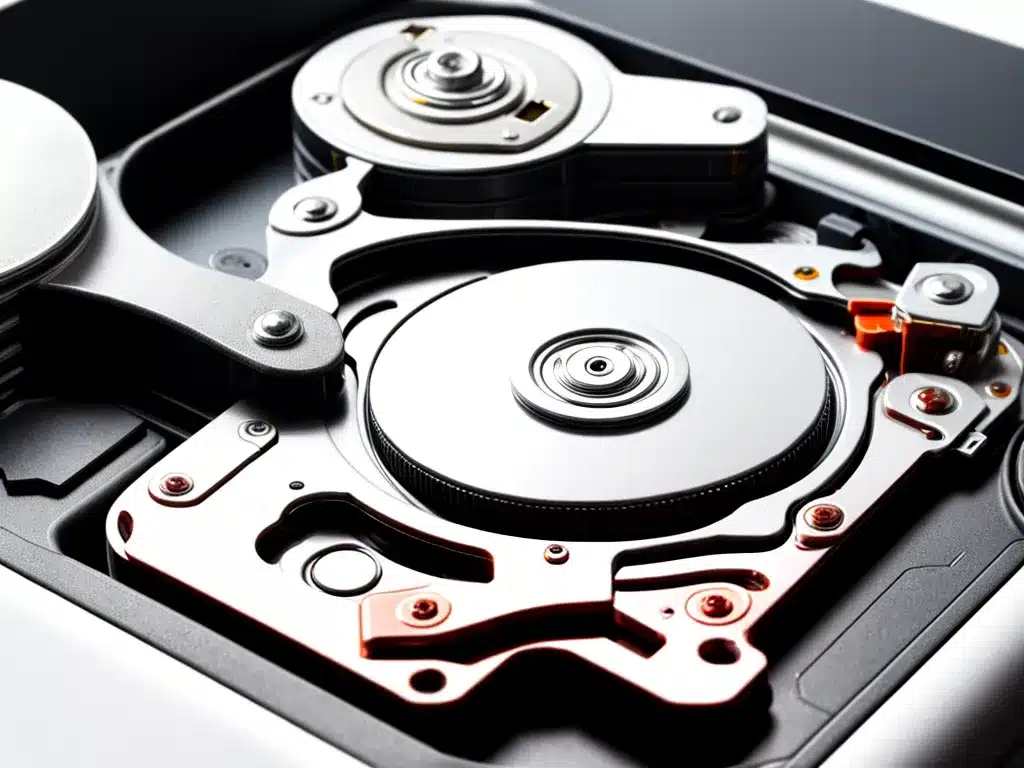A clicking hard drive can be caused by different issues, but it usually indicates a mechanical or physical problem with the drive. When a hard drive starts clicking, it will often fail to boot or will be very slow to load files. This can be extremely concerning if the drive contains important files that have not been backed up elsewhere.
The good news is that in many cases, data can still be recovered from a clicking hard drive using special data recovery software or hardware. With the right tools and techniques, you can successfully recover lost files and get important documents back. Here is an in-depth look at the options for recovering files from a clicking hard drive this year.
Evaluating the Hard Drive and Backing Up Any Accessible Data
The first step is to evaluate the state of the hard drive and determine if any data can still be accessed normally.
Plugging the Clicking Hard Drive Into a Computer
-
Carefully connect the clicking hard drive to a computer as an external drive either using SATA/IDE cables or a USB hard drive enclosure.
-
See if the drive mounts and can be accessed. Often, a clicking drive will fail to mount or only partially mount.
Accessing Any Files That Can Be Reached
-
If any files can be successfully accessed on the drive, immediately back them up to another location.
-
Copy data to an external hard drive or upload important files to a cloud backup like Google Drive or Dropbox.
Backing up accessible data right away is crucial before attempting any repairs, as the hard drive could fail completely at any point.
Choosing a Physical Recovery Method Based on the Type of Clicking
There are a few options for physical data recovery from a clicking hard drive depending on the exact symptoms:
Repairing Mechanical Issues (Sticking Heads, Stiction)
-
If the drive is clicking due to stiction or sticking heads, it may be repairable by tapping or shaking the hard drive. This can overcome mechanical sticking.
-
Placing the drive in the freezer for a few hours can also firm up lubricants inside and get stuck parts moving again. Just be sure condensation does not form when warming it up after.
Swapping Circuit Boards Between Drives
-
For drives clicking due to circuit board failures, swapping boards with an identical working drive can allow data recovery. The repair could be temporary.
-
Board swapping should only be attempted with drives of the same model number. Match firmware revisions if possible.
Bypassing Failed Components with DIY Jumper Cables
-
DIY IDE/SATA jumper cables can be used to connect a clicking drive while bypassing onboard controller components, potentially giving access for data recovery.
-
This method requires opening the hard drive enclosure and has risks. It should only be attempted by those experienced with electronics.
Choosing a File Recovery Software Option
If physical recovery methods are not viable or successful, many types of data recovery software can restore files from a clicking drive:
Software That Can Read Non-Mounting Drives
- Apps like Disk Drill have specialized modes that can read from a drive that is failing to mount. This maximizes the chances of copying data.
Programs That Rebuild Damaged Filesystems
- Tools like TestDisk can rebuild damaged partition tables and file systems. This may make file data accessible again.
Utilities That Recover Lost File Fragments
- If partial file data can be accessed, recovery software like Recuva can scan and reconstruct files from fragments.
Advanced Forensic File Recovery Applications
- For best results, consider a forensic recovery app like ReclaiMe that can deeply scan drives and extract files from damaged media.
Seeking Professional Data Recovery Services for Drives With Critical Data
If DIY software recovery efforts fail to recover the needed files from a clicking drive, professional data recovery labs provide full clean room facilities and experienced engineers that may be able to repair drives with complex issues and extract inaccessible data.
Evaluating Cost vs. Importance of Lost Data
-
Data recovery services range from $300 to over $3000 depending on the drive failure complexity and amount of data recovered.
-
Weigh the cost of recovery vs. the importance of documents and files stored on the clicking hard drive when deciding to pursue professional recovery.
Finding a Reputable Lab to Perform Recovery
-
Search for a facility with experience, capabilities for complex mechanical and electronic repairs, and positive customer reviews. Avoid low-end shops for critical data.
-
A lab like DriveSavers or Gillware can often recover data when consumer-level efforts cannot.
Final Tips on Preventing Catastrophic Data Loss
Going forward, it is essential to implement vital data protection practices:
-
Always maintain backups of important files on separate drives or in the cloud. Backups can prevent data loss when drives fail.
-
Consider RAID storage for drives storing crucial data. Redundant drives can provide access to data if a single drive fails.
-
Monitor hard drives using S.M.A.R.T. tools and replace aging drives before failure occurs.
With diligence and the right tools, clicking hard drive data recovery this year and beyond doesn’t have to result in disaster. Carefully follow the steps outlined and you stand an excellent chance of rescuing your valuable files. Just be sure to actively prevent future data loss by backing up consistently.













